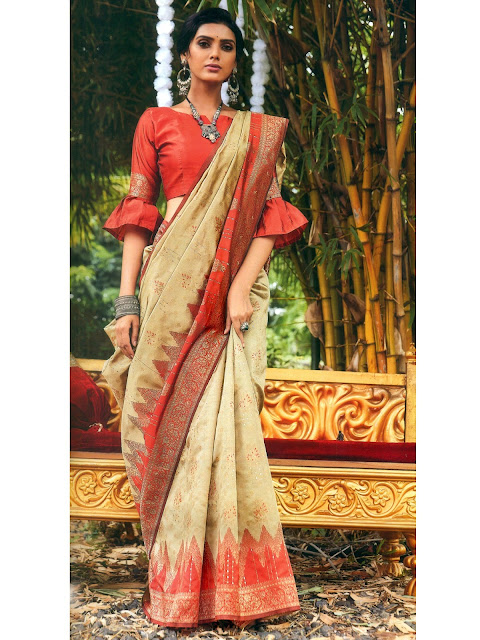How can you identify a Bomkai Saree? | Important Points
The use of tightly woven cotton, sophisticated floral and geometric motifs in the margins, and contrasting color borders and pallu have made these unique culturally.
Bomkai Saris are considered to be the traditional charm of eastern India, specifically Orissa. Bomkai is one of the identified geographical indications of India. These saris are available in both cotton and silk fabrics. The most delightful part is its threadwork in the designs of the border and the pallu.
Gaining popularity amongst fashion designers these saris are being worn by many celebrities. Aishwarya Rai Bachchan, the Bollywood diva, wore a special type of Bomkai known as "Radhakunja" at her wedding. Three saris which were designed by Chaturbhuj Meher at Sonepur, Odisha, were perfect to match her grace and aristocracy. These eye-catching saris are now considered a must in a women’s wardrobe.
Also, known as Sonepuri sari, the charming Bomkai saris are exclusively woven in handlooms in the western parts of Odisha. These saris are largely worn by classical dancers across the world. The sari is traditionally worn as auspicious attire during rituals, holy festivals, or on special occasions and celebrations. ‘Bandha’ is the local name of Bomkai saris. The concept of these saris is a part of the Odiya culture as old as the era of 600 B.C. Traditional Bomkai saris are crafted by the most skillful artists of Odisha who are believed to be the creators of the signature style of these saris.
Innumerable varieties of Bomkai Sari have been introduced to date. Some of the most popular ones include Sonepuri, Pasapali, Barpali, and Bapta saris. The patterns and themes designed on the Bomkai saris are mostly influenced by nature and cultural and tribal art. The look of the sari is related to simplicity and has a tribal tint to it. Several geometrical patterns are made on the sari like a pestle, hour-glass shaped drum, small flowers, bitter gourd, peacock, fish, and various other traditional designs. The design of fish which is believed to be a sign of success and affluence is often seen on the sari.
The supplementary warp weaving of the borders in these saris is called ‘Mikta Panji’, which is a latticework with the diamond form that gives the sari its distinction and unique peculiarity. The design is basically the weaver's thought, perception, and choice which is very delicately woven in fabric to portray the tradition and culture of India.
To design a Bomkai sari, the warp and weft are dyed as per requirement. The warp and weft are set by using wooden frames or ‘jalas’ that are fixed by the weavers in a specific pattern. The sari is woven in the (pallu) with contrasting colors and designs. The embellishment on the sari is done by using the extra weft technique commonly referred to as ‘jaala system’ that gives the embroidery the look of a mesh or ‘jaala’. The borders are woven using phool bandhaks.
To add in vogue with double contrast, the border and the pallu are dyed distinctly and worked on the basis of the color combinations. Most of the saris are created in two or more shades. The introduction of zari threads in weaving has become the new trend; otherwise, in earlier days the entire design was woven out of threadwork using cotton or silk yarn as the fabric base. This makes the Bomkai Saris stand apart from others.
That’s How You Will Identify Original And Prettiest Bomkai Sarees By Yourself, Thanks For Reading.

This comment has been removed by the author.
ReplyDeleteGreat post! A 2 feet Buddha Statue not only fosters tranquillity in your personal space but also accentuates your home like no other. It can soon become a centerpiece of your living room.
ReplyDelete